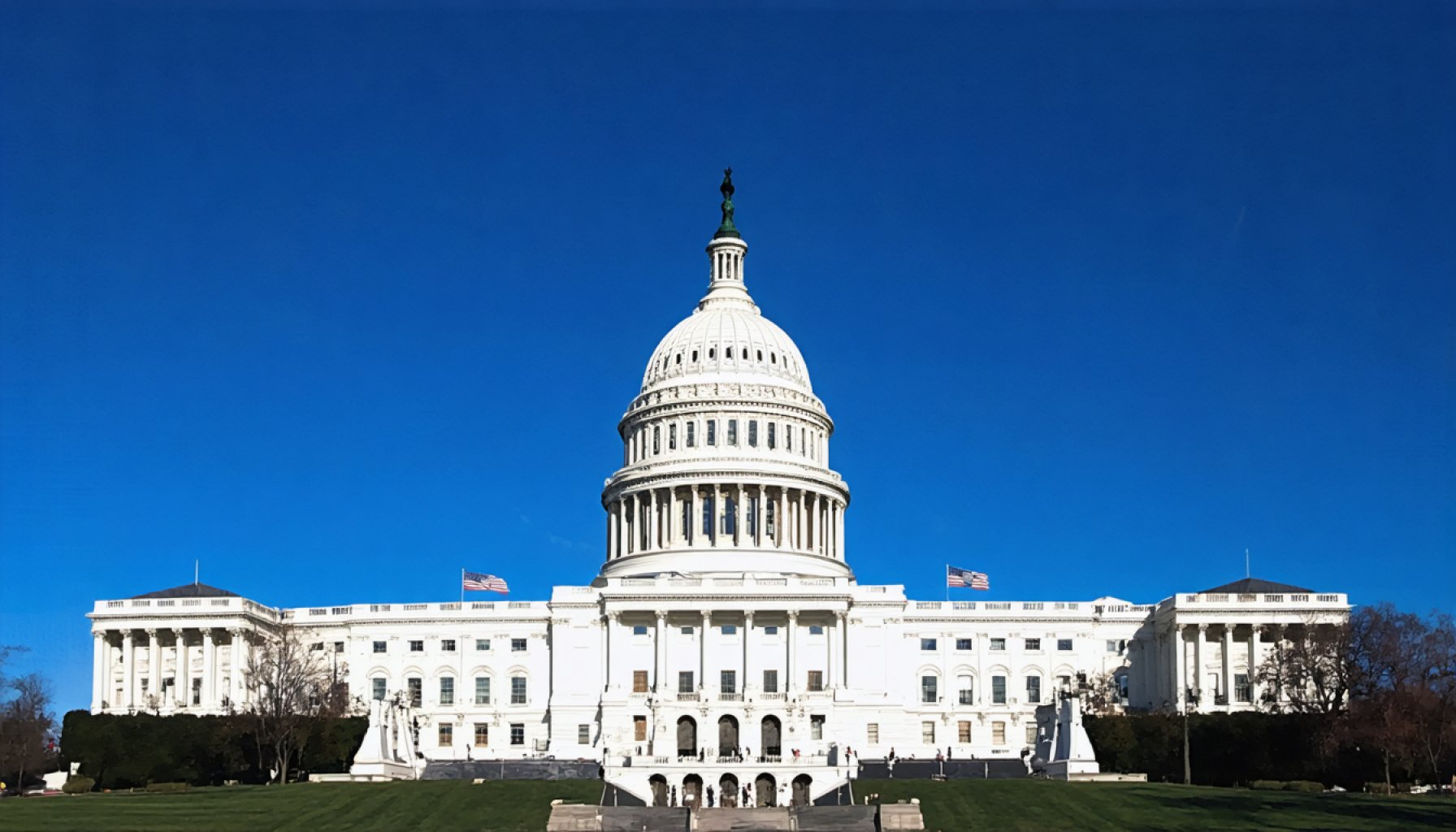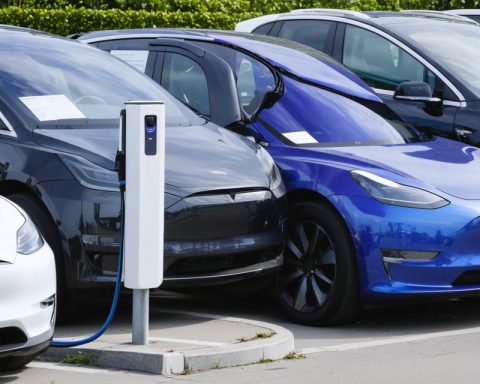- Urgency surrounds the preservation of pivotal clean energy tax credits linked to the Inflation Reduction Act on Capitol Hill.
- Representatives from over 100 companies are actively lobbying to highlight the economic and environmental significance of these credits.
- Clean Energy for America (CE4A) leads the charge, emphasizing the credits’ importance for a resilient energy future.
- Potential repeal of credits threatens industry growth and strategic energy independence.
- Some Republican voices acknowledge the necessity of renewable energy, opening dialogue possibilities.
- Active engagement by companies with elected representatives is crucial to preserving specific credits.
- Key stakeholders like the Solar Energy Industries Association and Enphase are pivotal in advocating for these incentives.
- Maintaining these tax incentives is essential for innovation, economic resilience, and environmental commitment.
The corridors of power on Capitol Hill are buzzing with urgency this week, as the clean energy sector mounts a decisive campaign to safeguard pivotal tax credits linked to the Inflation Reduction Act (IRA). In an atmosphere charged with tension and resolve, representatives from over 100 companies have converged, each determined to underscore the significance of these credits for both economic advancement and environmental sustainability.
Amidst the polished marble halls, the passionate voices of industry advocates are undeniable. Spearheaded by Clean Energy for America (CE4A), the coalition of lobbyists emerges not just as defenders of tax credits but as champions of a resilient and forward-thinking energy future. The prevailing concern is a potential full repeal of these credits, which cast long shadows of doubt across a burgeoning industry that not only envisions cleaner air but also strategic energy independence.
Yet, in the hushed corners of negotiation, there’s a glimmer of possibility. Contrary to the hardline stance for repeal, some voices within the Republican enclave quietly recognize the indispensable role of renewable energy in achieving ambitious national energy objectives. This subtle acknowledgment opens a window for dialogue—a sliver of hope that these vital credits could escape the chopping block.
The stakes extend far beyond policy, reaching into the pockets and futures of businesses across the nation. With a potential rollback looming, companies find themselves urged to take an active role, engaging directly with their elected representatives. The message is clear: individual appeals could tip the scales, advocating for the preservation of specific credits integral to their operations.
At the heart of this battle are pivotal organizations like the Solar Energy Industries Association and Enphase, whose vested interests underscore the broader narrative of innovation and economic resilience. Joining forces with CE4A, they represent a unified front, determined to protect incentives that have already catalyzed significant private sector investments—investments seen as essential stepping stones toward a more stable and prosperous energy landscape.
As the dust settles from this week’s Capitol Hill activities, one takeaway shines brightly: the future of clean energy, interwoven with economic opportunity and environmental responsibility, hinges on maintaining these tax incentives. A ripple effect that redefines not just energy policies but the very essence of the nation’s environmental commitment. The call to action is unequivocal: advocacy and proactive engagement are the pathways to securing the clean energy revolution’s continued ascent.
The Race to Save Clean Energy Tax Credits: What You Need to Know Now
Understanding the Clean Energy Tax Credits
The recent efforts on Capitol Hill underline the critical nature of tax credits related to the Inflation Reduction Act (IRA) for the clean energy sector. These credits play a pivotal role in driving investments in renewable energy, fostering innovation, and ensuring the U.S. moves toward strategic energy independence. For businesses and consumers alike, maintaining these credits correlates with significant economic and environmental benefits.
How Clean Energy Tax Credits Work
Clean energy tax credits offer financial incentives for businesses and homeowners who invest in renewable energy technologies. They help reduce the upfront costs associated with installing solar panels, wind turbines, and other renewable energy systems. As a result, these credits make it financially viable for more companies and individuals to transition to clean energy.
Real-World Use Cases and Benefits
1. Businesses: Companies like Tesla and First Solar benefit through cost reductions in production and deployment, allowing them to scale rapidly and lower consumer prices, making clean tech more accessible.
2. Homeowners: When installing solar panels, homeowners can receive substantial tax rebates—offsetting initial costs and reducing electricity bills over time.
3. Job Creation: According to the Solar Energy Industries Association, the growing clean energy sector has already created hundreds of thousands of jobs, and maintaining these credits could further bolster employment across the nation.
Industry Trends and Market Forecasts
– Growth Potential: The global push towards renewable energy sources suggests a strong growing market, expected to reach $1.5 trillion by 2025. The U.S. market’s participation hinges significantly on maintaining supportive policies like the IRA tax credits.
– Investment Increase: With stable policies, private investments in U.S. renewable energy projects are predicted to grow, potentially tripling by 2030.
Controversies and Limitations
– Political Divide: While some Republican policymakers recognize the role of renewables in national energy objectives, others argue against federal subsidies and prefer market-driven solutions.
– Economic Concerns: Critics often cite government spending and fiscal responsibility, questioning whether tax credits distort market competition or result in inefficiencies.
Pros and Cons Overview
Pros:
– Increased Investment in Clean Energy: Encourages development and innovation.
– Jobs Growth: Provides a growing number of jobs in the renewable energy sector.
– Environmental Impact: Supports reduction in carbon emissions.
Cons:
– Political Uncertainty: Continuous debates and potential repeals create a volatile planning environment for businesses.
– Fiscal Impact: May lead to budgetary pressures if not managed within broader economic policies.
Quick Tips for Advocates
1. Engage with Local Representatives: Direct communication can emphasize the benefits and sway opinions.
2. Formulate Personal Stories: Real-life impact stories are persuasive in highlighting the tangible benefits of clean energy credits.
3. Collaborate with Advocacy Groups: Joining forces can amplify voices and maximize influence on policy decisions.
Conclusion
The ongoing debate around clean energy tax credits encapsulates broader themes of economic prosperity, environmental stewardship, and energy independence. As we await decisions from Capitol Hill, stakeholders from all corners are urged to advocate and participate actively to secure a sustainable future for the clean energy sector.
For more on clean energy initiatives and support mechanisms, visit the U.S. Department of Energy.














